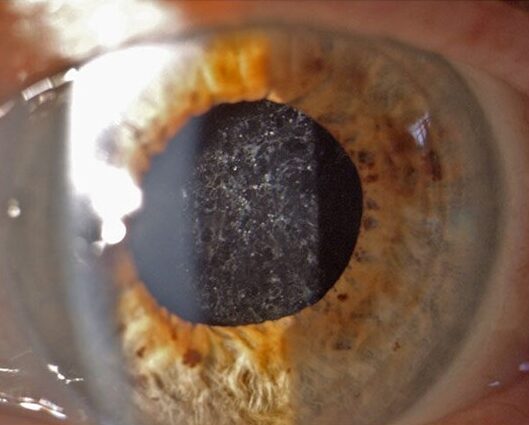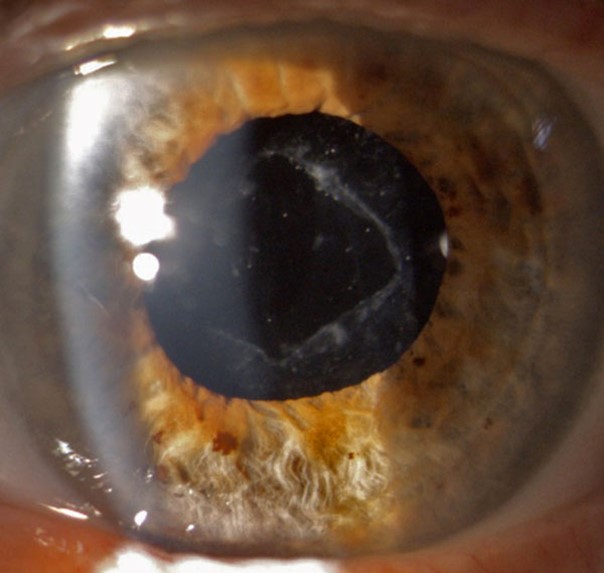Post-cataract laser treatment (YAG)
YAG capsulotomy
During cataract surgery, the lens nucleus is removed and the natural lens capsule is left in the eye so that the artificial lens can be positioned in the lens capsule. If the lens capsule becomes cloudy after the operation, this is known as secondary cataract (see Fig. 1). This applies to the majority of operated patients and can occur early or late after the operation, depending on the type of cataract.
If this opacity leads to a deterioration in vision, an opening is made in the lens capsule using a YAG laser so that the optical axis is freed from the opacity (see Fig. 2). This procedure is called a "YAG capsulotomy". Patients can see clearly and sharply again immediately after this procedure.
To do this, the pupil is first dilated with eye drops. At the slit lamp, the laser beam is directed onto the opacified lens capsule with or without the use of a focusing contact lens. Light energy is used to create an opening in the lens capsule.
After the procedure, the intraocular pressure is usually checked.



YAG iridotomy
YAG laser iridotomy is used for acute glaucoma. People with long-sightedness in particular have a smaller eye and therefore narrower anatomical conditions. In rare cases, this can lead to closure of the angle of the chamber, resulting in an acute increase in eye pressure. This increase in eye pressure is usually associated with extreme headaches and visual impairment.
In such cases and if there is a risk of closure of the chamber angle, a small opening (approx. 0.1-0.2 mm) is cut at the iris root using the YAG laser, which acts like a valve and prevents the increase in eye pressure in angle-closure glaucoma.

